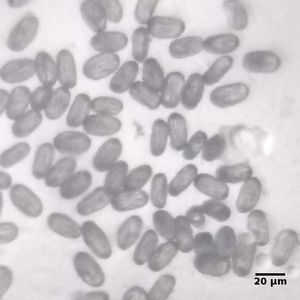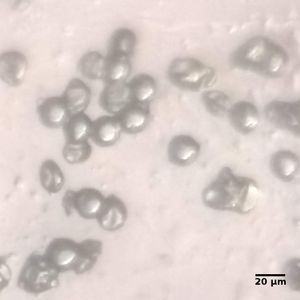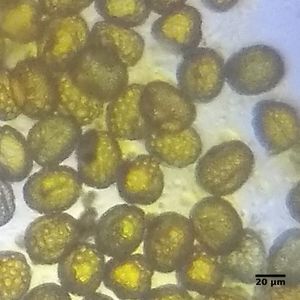More Measurements
 May 26, 2018 • 11:01 AM UTC
May 26, 2018 • 11:01 AM UTC Unknown Location
Unknown Location 140x Magnification
140x Magnification Microorganisms
Microorganisms
varuni
Learn about the author...
21posts
22comments
1locations
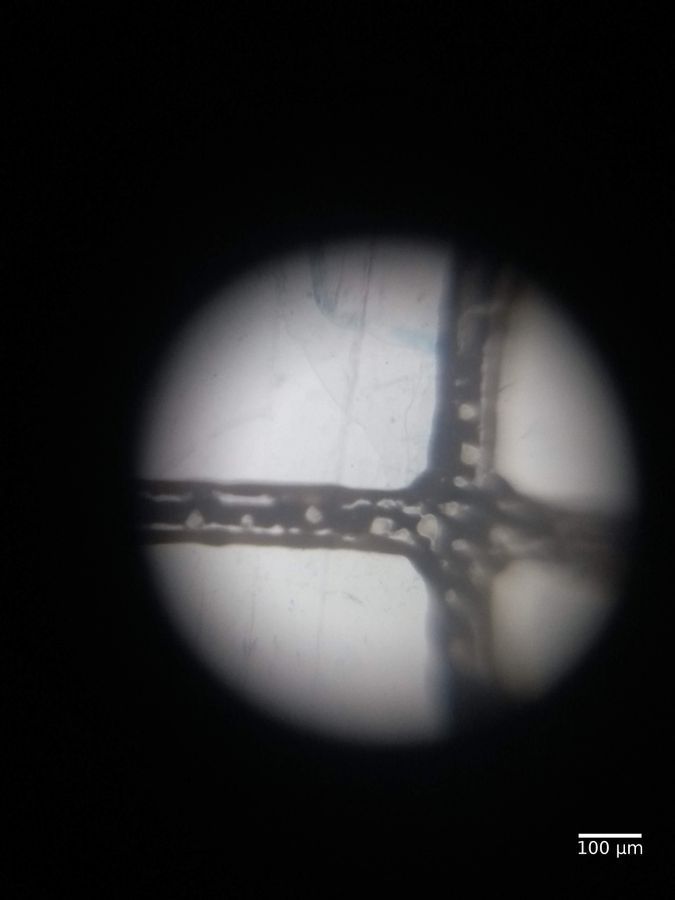
So here are more trials with measurements on the Foldscope. I promise there is cool pollen at the end. (But feel free to jut TLDR and scroll to the end if you are just looking for cool pollen pics…)
As pointed out by @laksiyer , there was a discrepancy in my estimated pollen size and the size he estimated in a previous post:
Pollen Hunters project-II : Pollen roster
Theres also a very recent informative (and beautiful) post on pollen size diversity by @ kaushalsood :
Viewing and Measuring size of Pollen using Foldscope
Here, @ kaushalsood measures Caesalpinia pulcherrima pollen to be 65-70 microns. Which is also different from @laksiyer ‘s measurement of 50-60 microns. My estimate was 80 microns. (I think my estimate is most probably inaccurate — I’ll try and explain how I fix that later in this post.)
One possibility is that there is large natural variation in pollen size between individuals of the same species. More likely, pollen size varies as a result of dessication level. Either or both of these could be true — we would have to ask a palynologist (a word I recently learnt) . In the meantime, its probably a good idea to converge on Foldscope measurement methods.
So after reading @laksiyer ‘s comment to my previous post , I went back to the Foldscope and took an image of just the grid, in focus. I then measured the number of pixels in the grid line, and set that to 100 microns. Here’s it with a scale bar:
As pointed out by @laksiyer , there was a discrepancy in my estimated pollen size and the size he estimated in a previous post:
Pollen Hunters project-II : Pollen roster
Theres also a very recent informative (and beautiful) post on pollen size diversity by @ kaushalsood :
Viewing and Measuring size of Pollen using Foldscope
Here, @ kaushalsood measures Caesalpinia pulcherrima pollen to be 65-70 microns. Which is also different from @laksiyer ‘s measurement of 50-60 microns. My estimate was 80 microns. (I think my estimate is most probably inaccurate — I’ll try and explain how I fix that later in this post.)
One possibility is that there is large natural variation in pollen size between individuals of the same species. More likely, pollen size varies as a result of dessication level. Either or both of these could be true — we would have to ask a palynologist (a word I recently learnt) . In the meantime, its probably a good idea to converge on Foldscope measurement methods.
So after reading @laksiyer ‘s comment to my previous post , I went back to the Foldscope and took an image of just the grid, in focus. I then measured the number of pixels in the grid line, and set that to 100 microns. Here’s it with a scale bar:

I used Fiji/ImageJ to measure the diameter of the lens to be around 810 microns.
Using this new radius measurement, I re-calibrated the image from my previous post and updated the scale bar:
Using this new radius measurement, I re-calibrated the image from my previous post and updated the scale bar:
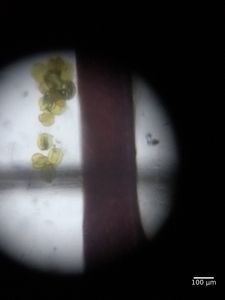
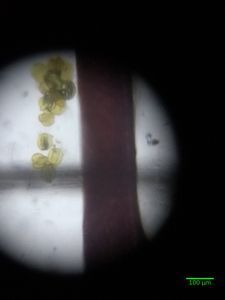
Notice that the scale bar is slightly bigger in the newly calibrated image (green scale bar).
So now, I would estimate the pollen of C. pulcherrima to be ~60 microns, with the colpi making lobes ~20 microns in diameter.
Using the diameter, I can also calibrate images from other pollen like from this
Karuvaipillai
(
Murraya koenigii
) flower that I posted about earlier :
So now, I would estimate the pollen of C. pulcherrima to be ~60 microns, with the colpi making lobes ~20 microns in diameter.
Using the diameter, I can also calibrate images from other pollen like from this
Karuvaipillai
(
Murraya koenigii
) flower that I posted about earlier :

It seems like M. koenigii pollen are pretty uniform: 32-36 microns in length. (This is not always true — Banana pollen is strange! I have posted about my altercation with it here .)
Since M. koenigii pollen are so uniform, as long as you can see pollen, you calibrate the image! I took pollen length to be 34 microns and calibrated these two images using the pollen itself:
Since M. koenigii pollen are so uniform, as long as you can see pollen, you calibrate the image! I took pollen length to be 34 microns and calibrated these two images using the pollen itself:
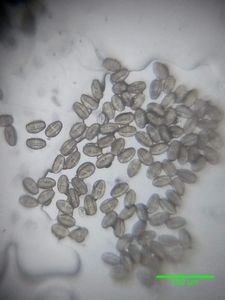
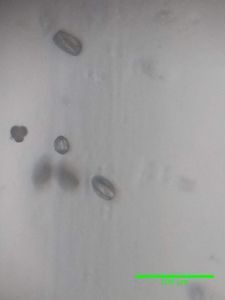
Not only can I get more pollen lengths, but also, from the second image where I can see the colpi of one pollen grain, I can estimate the inner and outer diameters of the pollen to be 7 microns and 11 microns respectively.
Now, we can also cut out two 200×200 micron squares out of different images and compare them:
Now, we can also cut out two 200×200 micron squares out of different images and compare them:
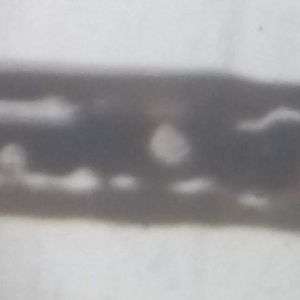
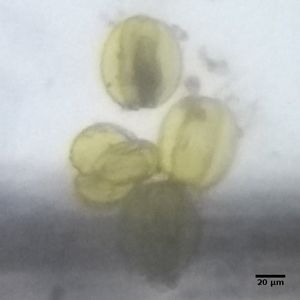
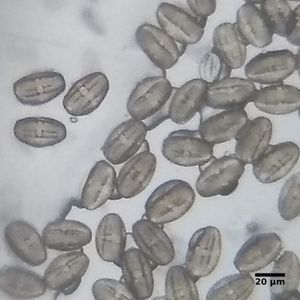
(You can do this easily in Fiji: Edit –> Selection –> Specify)
However, we do still need to converge on a measurement method. The grid measurement and calibration seems reasonable. But How do we adapt that to images that are either without a grid or without recorded zoom (if you get very excited, like me, when you look at cool pollen and start zooming in to see them better).
Putting aside the palynology questions mentioned earlier, there are some Foldscope questions we can try to figure out to get accurate pollen (or any) measurements:
Is there a standard diameter of the Foldscope lens? Is this a good way to calibrate images? It’s not clear to me how the zoom on the phone camera changes the image. Obviously, the phone camera zoom doesn’t change the resolution of the Foldscope lens. But does zooming actually give a higher resolution through the phone camera? (There are two lens’ involved here — so the optics is a but confusing to me…) Finally, is there a good way to calculate error bars on size of things seen under a Foldscope?? As a side note: one of the activities for my DBT-Foldscope project is to get students to figure out how to measure (and why). I’m sure they will have some fun ideas — I will update this post with what they come up with…
This post is open to read and review on The Winnower.
However, we do still need to converge on a measurement method. The grid measurement and calibration seems reasonable. But How do we adapt that to images that are either without a grid or without recorded zoom (if you get very excited, like me, when you look at cool pollen and start zooming in to see them better).
Putting aside the palynology questions mentioned earlier, there are some Foldscope questions we can try to figure out to get accurate pollen (or any) measurements:
Is there a standard diameter of the Foldscope lens? Is this a good way to calibrate images? It’s not clear to me how the zoom on the phone camera changes the image. Obviously, the phone camera zoom doesn’t change the resolution of the Foldscope lens. But does zooming actually give a higher resolution through the phone camera? (There are two lens’ involved here — so the optics is a but confusing to me…) Finally, is there a good way to calculate error bars on size of things seen under a Foldscope?? As a side note: one of the activities for my DBT-Foldscope project is to get students to figure out how to measure (and why). I’m sure they will have some fun ideas — I will update this post with what they come up with…
This post is open to read and review on The Winnower.
Sign in to commentNobody has commented yet... Share your thoughts with the author and start the discussion!
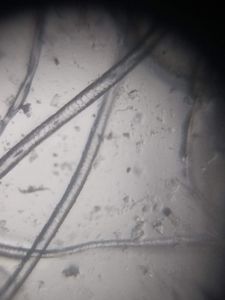
 0 Applause
0 Applause 0 Comments
0 Comments
